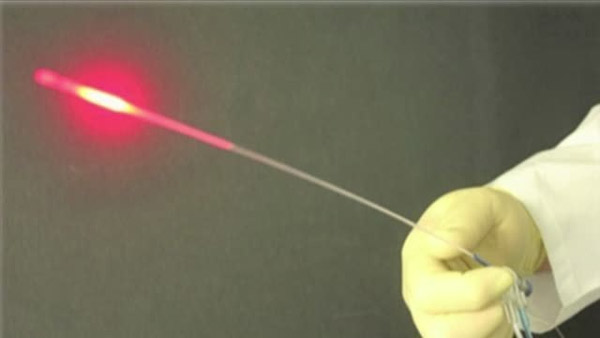 Three million people in the United States live with epilepsy, a brain disorder that causes sudden, unpredictable seizures. Surgery is often considered a last resort, but new laser technology is making it easier on patients.
Three million people in the United States live with epilepsy, a brain disorder that causes sudden, unpredictable seizures. Surgery is often considered a last resort, but new laser technology is making it easier on patients.
A quiet jog through the woods used to be a luxury Corey Moquist couldn’t afford.
“I’d have to rely on other people to get me around, driving wise,” Corey said. “I’d have to worry about going out and doing stuff outdoors.”
Corey had epilepsy, and suffered random, uncontrollable seizures.
Corey explained that he would be, “On the ground shaking, lose consciousness, and then be out of it for, basically, the whole day.”
Treatment often requires removing part of the skull to remove the brain tissue causing the seizures. The recovery is long, and the scar is a large, jagged reminder of the experience. But neurologists now have a new tool to make it less intimidating. It looks like a magic wand and it uses cutting-edge laser technology.
“With this new technique we have an opportunity to do it in a minimally invasive way,” said Joseph Neimat, MD and MS, Neurosurgeon at Vanderbilt University Medical Center in Nashville, Tennessee. “We insert a small probe that has a laser on the end.”
Neurosurgeons make a small hole for the two millimeter wide laser. And guided by MRI, they’re able to burn away the seizure-causing brain tissue.
“And we can control very precisely what we destroy, what part of the brain we take out,” Dr. Neimat told Ivanhoe.
Now surgery leaves a smaller scar and a shorter recovery. It may not be an actual magic wand, but it comes close for people like Corey.
Corey’s recovery was quick. He was back to his normal activities in just a few weeks. This kind of laser technology is already being used in some cases to melt tumors in a spinal vertebra.
Contributors to this news report include: Cyndy McGrath, Supervising Producer and Jessica Sanchez, Field Producer; Amber Sumpter, News Assistant; Jamison Koczan, Editor and Videographer.